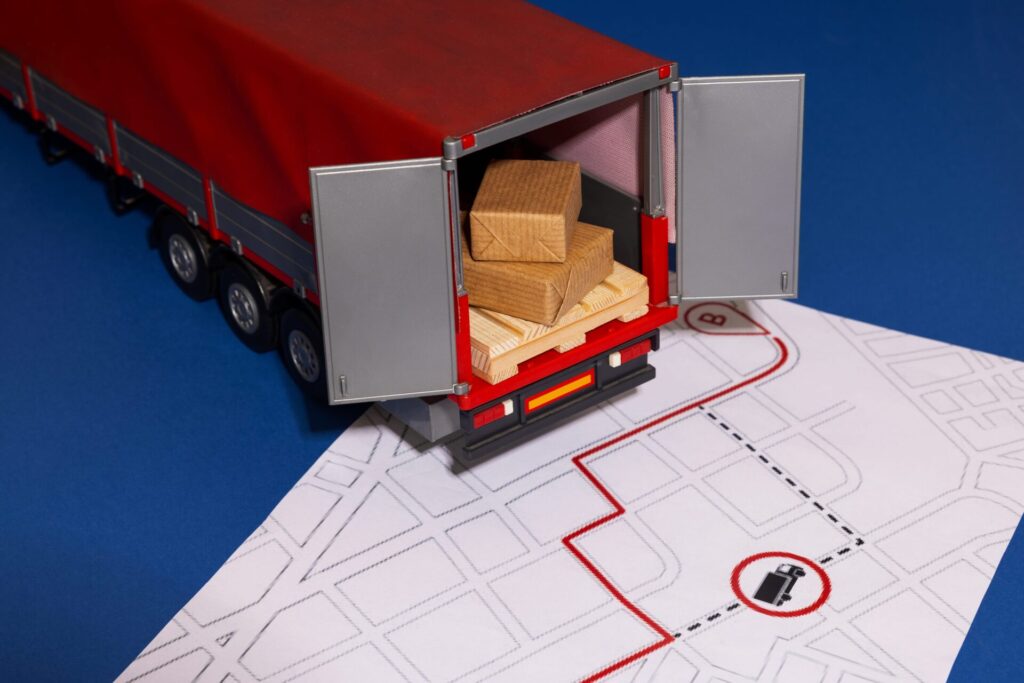
Hidden Costs of LTL Freight: How to Avoid Them
Less Than Truckload (LTL) shipping can be a lifesaver for businesses that don’t need to fill an entire trailer. By paying only for the space you use, you ostensibly save money while maintaining greater flexibility in your supply chain. But while LTL may sound like the budget-friendly solution, hidden costs lurk around every corner. A seemingly straightforward invoice can balloon with surcharges, unexpected fees, and reclassification penalties if not managed carefully.
This comprehensive guide dives into the hidden expenses that frequently catch shippers off guard. From overreliance on accessorial services to billing disputes caused by inaccurate freight classing, we’ll explore every angle that can push your LTL costs sky-high. Armed with these insights—and practical tips for avoiding these pitfalls—you’ll be better equipped to ship goods efficiently and predictably without breaking the bank.
Introduction to LTL Freight
Why “Less Than Truckload” Isn’t Always Cheaper
The primary appeal of LTL shipping is paying only for the space you use on a truck. If your shipment weighs just 2,000 pounds, you don’t have to pay for 40,000 pounds of capacity. However, LTL often entails:
- Multiple Handling Points: Goods are shifted between terminals and cross-docks, raising the chance of damage or delays.
- Additional Fees: Services that might be bundled in Full Truckload could be itemized in LTL, resulting in higher final costs than you’d expect.
The Importance of Understanding Hidden Fees
These charges can be stealthy, popping up after the shipment is already in transit or even after it’s delivered. They range from small add-ons like liftgate fees to larger reclassification surcharges if your weight or freight class is misdeclared. Knowing where they come from is the first line of defense—helping you budget better and negotiate more effectively with carriers.
Fuel Surcharges and Market Fluctuations
How Fuel Costs Affect LTL Pricing
Fuel surcharges are dynamic fees carriers add to offset volatile fuel prices. If oil prices spike, carriers quickly adjust surcharges upward. LTL shipments often feel this impact more acutely because:
- Smaller Freight Loads: Each load’s per-mile cost can grow as fuel prices rise.
- Frequent Consolidation: Carriers pass on the cost of managing multiple pickups and drop-offs.
Carriers typically update their fuel surcharge schedules weekly or monthly, creating an unpredictable element in your shipping budget.
Strategies to Mitigate Surcharge Impact
- Consolidate Shipments: Ship fewer, larger loads rather than multiple small ones.
- Lock in Contracts: Some carriers let you negotiate a fixed surcharge or a maximum cap for long-term partnerships.
- Monitor Fuel Indices: Keep tabs on weekly national averages for diesel to anticipate changes and adapt your shipping schedule.
Accessorial Charges Explained
Inside Delivery, Limited Access, and More
Accessorials are extra services not covered in a basic LTL rate. Common examples include:
- Liftgate Service: When no dock or forklift is available to load/unload.
- Inside Delivery: Bringing freight beyond the loading dock or building entrance.
- Residential Delivery: Delivering to a home or non-commercial location.
- Limited Access: Schools, construction sites, military bases—places with restricted access or requiring special permits.
Negotiating or Minimizing Extra Services
- Identify Genuine Needs: Only request a liftgate or inside delivery if truly necessary.
- Bulk Agreement: If you consistently need inside delivery, consider a contract that includes it at a fixed rate.
- Carrier Selection: Some carriers specialize in certain industries or services and may bundle accessorials at a discount.
Detention and Redelivery Fees
(Common Causes of Shipment Delays
Carriers schedule LTL routes tightly. If your dock isn’t ready at the pickup time or the consignee is late accepting the delivery, carriers can impose detention fees for waiting. Redelivery fees apply if the carrier must attempt delivery more than once—often because the consignee wasn’t prepared to receive the shipment on the scheduled date.
Frequent culprits include:
- Staffing Issues: Not enough dock workers to quickly load/unload.
- Scheduling Gaps: Booking the carrier before your freight is fully ready.
- Unforeseen Site Constraints: Congested areas, blocked docks, or insufficient receiving capacity.
Proactive Steps to Avoid Additional Costs
- Communicate Early: Let carriers know your dock hours and any potential holdups.
- Book Appropriate Appointment Windows: If your consignee operates limited hours, schedule within that timeframe to avoid forced redelivery.
- On-Site Preparedness: Have the freight palletized, labeled, and accessible by the planned pickup/delivery time.
Incorrect Weight and Class Reclassifications
The Role of Density and Freight Class
LTL rates heavily hinge on an item’s freight class, determined by density, stowability, handling, and liability. If your declared class is lower than it should be, carriers can reclassify your load mid-transit.
Consequences include:
- Billing Adjustments: A higher invoice than anticipated.
- Potential Delivery Delays: Freight may be held at a terminal until issues are resolved.
- Strained Carrier Relations: Repeat offenders may face stricter scrutiny, leading to more frequent reweighs.
Reweigh Fees and Best Practices
Reweigh fees are administrative penalties carriers tack on if they find your weight is incorrect. To avoid them:
- Use a Calibrated Scale: Don’t rely on estimates.
- Include All Packaging: Pallets, crates, and any protective materials.
Document Changes: If your product or packaging method changes, recalculate your freight class accordingly.

Packaging and Damage Claims
Why Poor Packaging Can Lead to Hidden Expenses
In LTL shipping, your freight might share trailer space with multiple other consignments, increasing the chances of collisions, toppling, or forklift damage. When goods arrive damaged, you can file a claim—but carriers often limit their liability if they can prove inadequate packaging contributed to the problem. This leaves you:
- Covering Replacements: If your declared value exceeds the carrier’s liability cap.
- Paying Higher Premiums: If you regularly file damage claims, your negotiated rates may suffer.
Reducing Claims Through Proper Preparation
- Robust Pallets: Check for broken boards or rotting wood.
- Securing Stretch Wrap: Fully encase freight to prevent shifting.
- Corner and Edge Protectors: For fragile or high-value items, add extra padding or foam inserts.
- Clear Labeling: Mark pallets as “Fragile” or “This Side Up” to alert handlers of special care requirements.
Billing and Administrative Overlook
Invoicing Errors and Disputes
Miscommunications or typographical mistakes in your Bill of Lading (BOL) can lead to:
- Incorrect Carrier Fees: If the BOL lists a lower weight or omits a required accessorial.
- Delayed Payment: Payment disputes often take weeks—or months—to resolve, racking up late fees.
- Customer Dissatisfaction: If your end-customer is responsible for shipping charges and faces unexpected add-ons.
Tips for Ensuring Accurate Documentation
- Digital Systems: Use a TMS (Transportation Management System) or automated quoting tool to populate consistent shipping data.
- Frequent Audits: Regularly review invoices for random, unexplained surcharges.
- Cross-Check: Compare final invoices against your original quote and BOL details.
Terminal Handling and Cross-Docking Costs
Multiple Touchpoints in LTL Shipments
LTL freight often journeys through several terminals and cross-dock facilities before reaching its destination. Each transfer requires:
- Manual Sorting: Workers must unload and reload each pallet onto the next truck.
- Additional Storage: Brief layovers or staging times can incur fees if freight remains in a terminal longer than planned.
Streamlining the Transit Process
While you can’t always bypass the network of terminals, you can:
- Partner with Regional Carriers: If most deliveries are within a certain radius, a regional LTL provider might reduce the number of transfers.
- Optimize Pallet and Package Design: Make it easier for terminals to handle your freight quickly—labeling everything clearly, using standard pallet sizes, etc.
- Minimize Delays at Each Step: Communicate with carriers to confirm arrival times and cross-dock schedules.
Residential and Special Deliveries
Additional Charges for Non-Commercial Destinations
Carriers categorize any address lacking a standard loading dock or forklift as “residential.” Homes, farms, and even some rural business locations may trigger:
- Liftgate Fees: Because residential sites rarely have loading docks.
- Call-Ahead or Appointment Fees: Coordinating with consignees who may only be available after work hours.
Scheduling Deliveries to Reduce Surcharges
- Batch Residential Deliveries: If you have multiple residential clients, some carriers offer a slight discount for consolidated routes.
- Set Clear Expectations: Make sure your end-customer is aware of the potential charges if they require specialized home delivery services.
- Select Residential-Friendly Carriers: Certain carriers specialize in final-mile deliveries to homes, sometimes offering more competitive rates.
Appointment and Notification Fees
Why Some Consignees Require Call-Ahead Services
Consignees with strict operating hours—like warehouses, retail stores, or specialized facilities—may not always accept walk-up deliveries. They demand:
- Appointment Scheduling: The carrier must secure a delivery slot.
- Notification Services: The carrier calls ahead to confirm someone is on-site to unload.
Each step can tack on extra fees to your LTL invoice if not planned in advance.
Coordination to Eliminate Unnecessary Costs
- Confirm Receiving Hours: If your consignee has limited hours, align your carrier’s route to avoid missed deliveries.
- Prearrange Slots: Some carriers let you schedule deliveries electronically, often at a discounted rate compared to last-minute phone calls.
- Communicate with the Consignee: Make sure they understand the carrier’s timeline so someone is present to receive the freight promptly.
Limited Access Locations
Identifying Sites That Trigger Higher Rates
Limited access typically applies to:
- Military Bases: Strict security checks require extra driver time.
- Construction Sites: Equipment, debris, and no formal docks complicate deliveries.
- Educational Institutions: Schools and universities often limit truck access to certain hours or gates.
Carriers see these as riskier or more time-consuming, hence charging extra.
Communicating Complexities Early
If you suspect the destination is limited access:
- List It on the BOL: Provide a contact name, phone number, and gate or building details.
- Ask About Workarounds: Some carriers might negotiate a pre-cleared route or an off-hour delivery to cut fees.
- Build a Relationship: If you frequently deliver to the same limited-access location, establishing a routine with the local carrier terminal can streamline future shipments.

Accessorial Bundling and Hidden Markups
When Carriers Combine Services into Larger Fees
Sometimes carriers roll multiple minor charges—like inside delivery, limited access, and appointment scheduling—into one hefty line item. If unbundled, these services might cost less or be negotiable. Always scrutinize invoices for grouped charges that might not reflect real usage.
Reviewing Invoices for Overcharges
- Compare Line Items to Quotes: If your quote lists each service separately, ensure your final invoice matches.
- Request Clarification: If you see a “miscellaneous” fee or lump sum, ask for a breakdown.
- Push for Transparency: Some carriers may try to obscure higher margins behind vague line items—insist on full disclosure.
Late Payment Penalties and Credit Terms
Carrier Penalties for Missed Due Dates
Just as you can be charged for detention or reclassifications, carriers impose penalties for late or missed invoice payments:
- Finance Charges: A certain percentage added every month until the bill is cleared.
- Credit Holds: If you consistently pay late, the carrier might demand prepayment or reduce your credit limit.
Negotiating Favorable Payment Arrangements
- Clear Terms: Ask your carrier about their standard credit window—often 15, 30, or 45 days.
- Volume Discounts: High-volume shippers might secure extended payment terms, like Net 60, to enhance cash flow.
- Early Payment Incentives: Some carriers offer a discount (e.g., 2% off) if you pay within 10 days.
Best Practices to Control LTL Costs
Accurate Shipment Data and Technology Tools
A small oversight in weight, dimensions, or classification can snowball into hidden fees. Combat these risks by:
- Using a TMS: Automate freight quotes, label generation, and BOL creation.
- Dimensional Scanners: Invest in dimensioning technology if you ship large volumes.
- Frequent Audits: Check that shipments match the details in your system—especially if your packaging methods or product lines change.
Partnering with 3PLs for Rate Transparency
Third-party logistics providers (3PLs) often:
- Negotiate Volume Pricing: Bundling multiple clients’ shipments can secure better base rates and accessorial structures.
- Offer Consolidated Billing: Simplify your invoice review and reduce administrative overhead.
- Have Dedicated Contacts: If something goes wrong, a 3PL can step in to resolve disputes quickly.
Conclusion
Hidden LTL freight costs can dismantle even the most carefully planned shipping budget. From seemingly minor fees like liftgate and inside delivery charges to more significant pitfalls like reclassifications or detention fees, these unexpected extras can balloon your final invoice and strain relationships with carriers.
The key to sidestepping these hidden charges is proactive management. Communicate thoroughly with carriers, ensure your freight class and weight data are accurate, and keep your documentation impeccable. By focusing on robust packaging, efficient scheduling, and transparent invoicing practices, you’ll build a strong defense against the stealthy fees that too often blindside unsuspecting shippers. With the right strategy and a willingness to negotiate, you can harness the benefits of LTL while keeping costs in check.
How useful was this post?
Click on a star to rate it!
Average rating 5 / 5. Vote count: 1
No votes so far! Be the first to rate this post.



